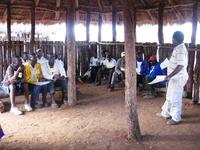Nathalie Cholet
Last update: 15 January 2014
Summary
In the context of a growing human population and a decreasing biodiversity worldwide, multifunctional areas, managed for simultaneous benefits for both biodiversity conservation and livelihood are required. Transfrontier Conservation Areas are good places to find potential candidates, such as the two study areas. In both the Mathenjwa and Savé Valley landscapes, agriculture and protected areas coexist, resulting in mosaic landscapes delivering a wide range of ecosystem services. Local farming communities contribute through their practices to the landscape building. They could indirectly be rewarded by the granting of an ecoagriculture landscape label integrating indirect payments for ecosystem services through a certification approach at the whole landscape level.
The ecoagriculture landscape labeling approach could be tested in these two areas. Beforehand, this study sets out the prerequisite minimum criteria that a landscape must comply with before being potentially considered for the granting of a label. These criteria are integrated within an index assessing the state of the landscape regarding ecoagriculture goals and ecosystem services, the Ecoagriculture Landscape Labelling Index. This index is tested on the Mathenjwa and Savé Valley landscapes through a participatory scoring process, integrating both community members and key informants. The overall results are above the average in the two landscapes, but a comparative study favours the Mathenjwa landscape and advocates for a future study to be carried out on the actual feasibility of implementing the label there. In parallel, further analyses demonstrate that the index methodology is flawed and must be considered cautiously as a simple tool within a complex labelling process.
Last update: 15 January 2014


